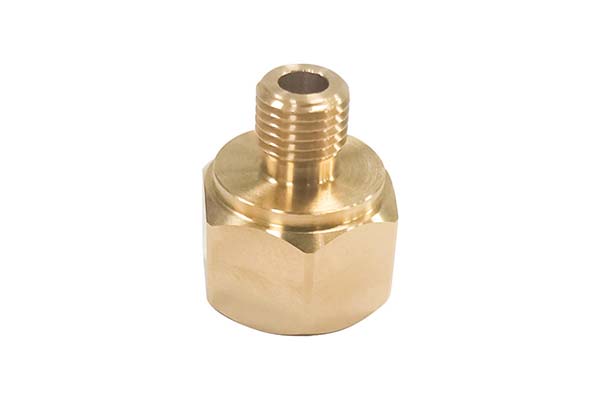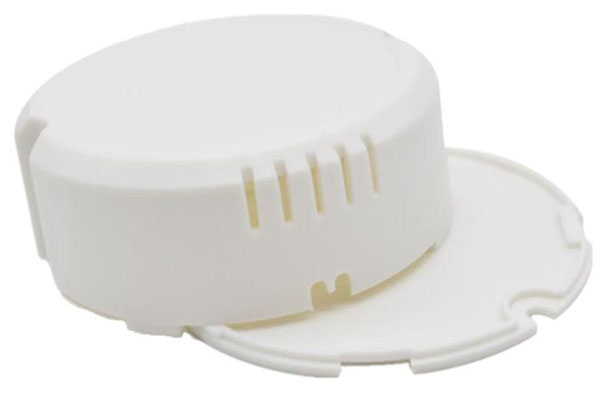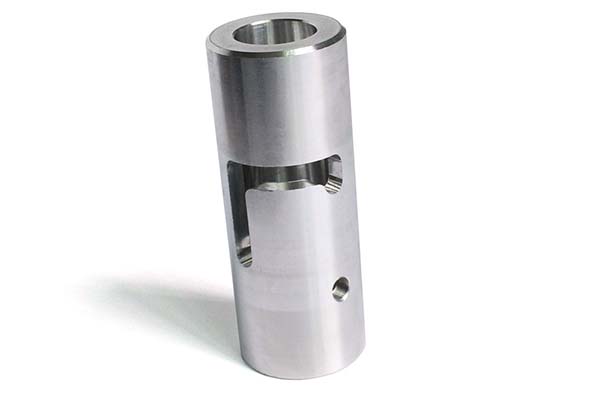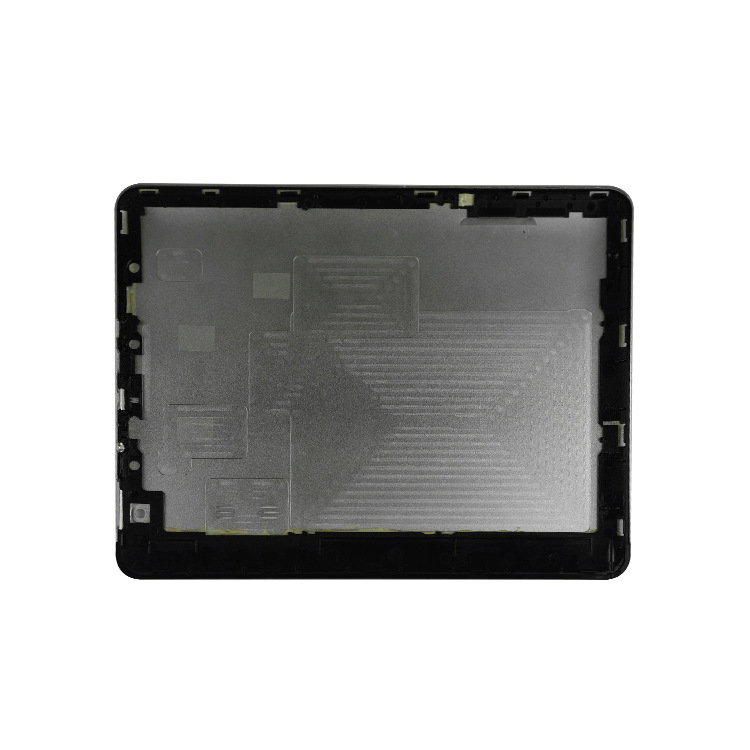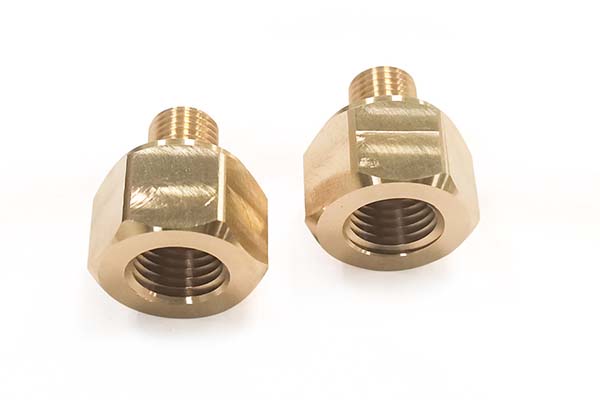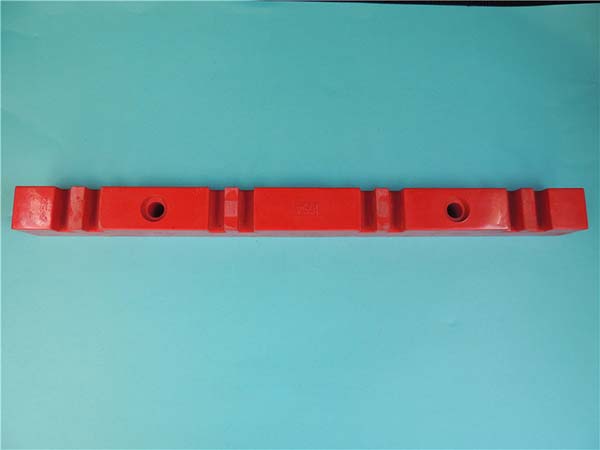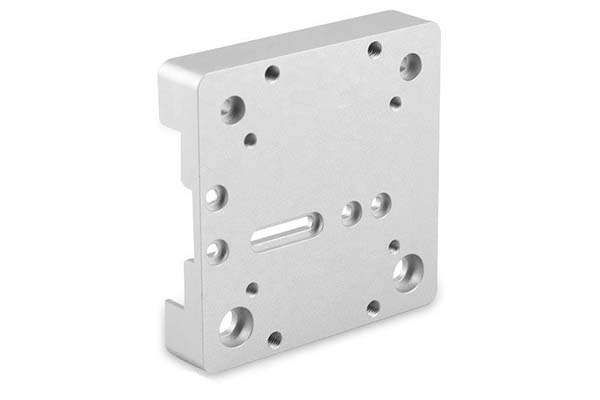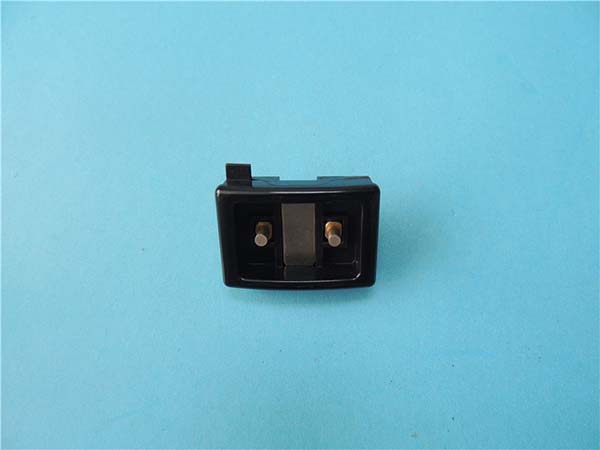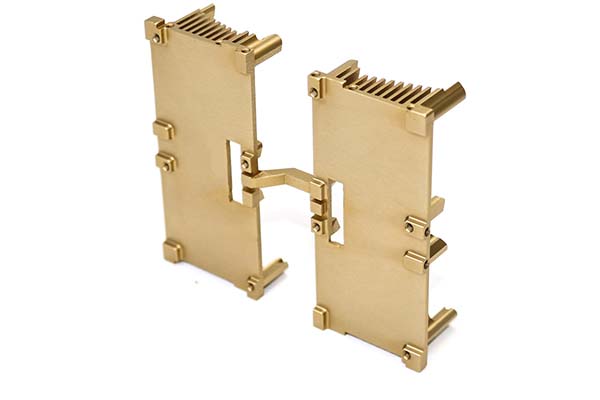In the intricate world of CNC machining, one of the most critical yet challenging aspects is determining the optimal feed speed. The feed speed, which refers to the rate at which the cutting tool advances along the workpiece, can significantly impact the quality of the finished product, the lifespan of the cutting tool, and the overall efficiency of the machining process. Incorrect feed speeds can lead to a variety of issues, from poor surface finishes and dimensional inaccuracies to premature tool wear and even machine breakdowns. This is where a CNC feed speed calculator becomes an invaluable tool. In this comprehensive guide, we will delve deep into the world of CNC feed speed calculators, exploring their basics, the factors that affect feed speed, how to use them effectively, their advanced features, applications, and the numerous benefits they offer.
CNC Feed Speed Calculator Basics
Definition and Purpose
A CNC feed speed calculator is a specialized tool, often in the form of software or an online application, designed to accurately determine the ideal feed speed for a given CNC machining operation. Its primary purpose is to simplify the complex process of calculating feed speeds, taking into account multiple variables that would otherwise be time - consuming and error - prone to compute manually. By providing precise feed speed recommendations, it helps machinists achieve consistent and high - quality results in their machining projects.
Basic Functions
The basic functions of a CNC feed speed calculator typically include taking in various input parameters related to the machining process and then using pre - programmed algorithms to calculate the appropriate feed speed. It also displays the calculated feed speed clearly, along with other relevant output results such as spindle speed and estimated machining time. For example, a simple calculator might just calculate the feed speed based on the input of tool diameter, spindle speed, and material type, while more advanced ones can handle a wider range of variables.
Importance in CNC Machining
In CNC machining, the importance of an accurate feed speed cannot be overstated. A proper feed speed ensures efficient material removal, which in turn improves machining efficiency. It also plays a crucial role in achieving the desired surface finish. For instance, if the feed speed is too high, it can cause rough surfaces, chatter marks, or even chip - out on the workpiece. On the other hand, if it's too low, the machining process becomes time - consuming, and the tool may overheat due to excessive contact time with the material, leading to reduced tool life. A CNC feed speed calculator helps avoid these pitfalls by providing optimized feed speed values.
How it Works
The working principle of a CNC feed speed calculator is based on a set of mathematical formulas and algorithms. It first takes in input parameters such as the type of material being machined, the tool type, tool material, tool geometry, spindle speed, depth of cut, and width of cut. For example, different materials have different hardness levels, and the calculator adjusts the feed speed accordingly. Softer materials can generally tolerate higher feed speeds, while harder materials require slower speeds to prevent tool damage. Based on these inputs, the calculator uses its internal algorithms to compute the output results, which mainly include the recommended feed speed.
Input Parameters
- Material properties: Different materials, such as aluminum, steel, or titanium, have unique hardness, ductility, and thermal conductivity properties. For example, aluminum is relatively soft and can be machined at higher feed speeds compared to hardened steel.
- Tool type: Whether it's a drill, mill, or lathe tool, each has different cutting characteristics. Drills are designed for creating holes, and their feed speed requirements differ from those of milling cutters used for shaping surfaces.
- Tool material: High - speed steel, carbide, or diamond - coated tools have varying levels of hardness and heat resistance. Carbide tools, being harder and more heat - resistant, can often operate at higher feed speeds than high - speed steel tools.
- Tool geometry: The shape and angle of the tool, such as the rake angle and clearance angle, affect how the tool cuts into the material. A tool with a more aggressive geometry may require a different feed speed to maintain efficient cutting.
- Cutting conditions: This includes factors like spindle speed, depth of cut, and width of cut. A higher spindle speed may require a corresponding adjustment in feed speed to ensure proper chip formation.
Output Results
The main output result of a CNC feed speed calculator is the recommended feed speed, usually expressed in units such as millimeters per minute (mm/min) or inches per minute (IPM). Additionally, it may also provide other useful information such as the estimated machining time for a particular operation, the required spindle speed for optimal performance, and an indication of the expected surface finish quality.
Common Types
There are two main common types of CNC feed speed calculators: software - based calculators that can be installed on a computer or integrated into CNC control software, and online calculators that are accessible via a web browser. Software - based calculators often offer more advanced features and can be customized to a specific machining environment. Online calculators, on the other hand, are convenient as they require no installation and can be used on any device with internet access.
User Interface
The user interface of a CNC feed speed calculator is designed to be user - friendly. It typically has clearly labeled input fields for each parameter, drop - down menus for selecting options such as material type and tool type, and a large, easy - to - read display for the output results. Some calculators even have visual aids, such as graphs or diagrams, to help users better understand the relationship between different parameters and the resulting feed speed.
Factors Affecting CNC Feed Speed
Material Properties
As mentioned earlier, material properties play a significant role in determining feed speed. Harder materials like tungsten carbide require much slower feed speeds to prevent tool wear and ensure accurate cuts. Soft materials, such as plastics, can be machined at higher speeds. For example, when machining a block of mild steel, a lower feed speed is needed compared to machining an aluminum alloy of the same size. The thermal conductivity of the material also matters. Materials with high thermal conductivity, like copper, can dissipate heat quickly during machining, allowing for potentially higher feed speeds without overheating the tool.
Tool Type, Material, and Geometry
- Tool type: Different tool types have different cutting actions. For example, a ball - nose end mill is used for contouring and finishing operations, and its feed speed requirements are different from those of a flat - bottom end mill used for roughing. Drills need to have a specific feed speed to ensure proper chip evacuation and prevent the drill bit from breaking.
- Tool material: The tool material's hardness and heat resistance are crucial. High - speed steel tools are suitable for general - purpose machining but may not be able to handle high - speed operations as well as carbide tools. Diamond - coated tools are excellent for machining non - ferrous materials at high speeds due to their extreme hardness.
- Tool geometry: A tool with a large rake angle may cut more aggressively and require a different feed speed compared to a tool with a smaller rake angle. The number of cutting edges on a tool also affects feed speed. Tools with more cutting edges can generally handle higher feed speeds as the cutting load is distributed among multiple edges.
Cutting Conditions
- Spindle speed: The spindle speed is directly related to the feed speed. As a general rule, as the spindle speed increases, the feed speed should also increase proportionally to maintain a consistent chip load. For example, if the spindle speed is doubled, the feed speed may need to be adjusted accordingly to keep the same amount of material being removed per tooth of the cutting tool.
- Depth of cut: A larger depth of cut requires a lower feed speed to prevent overloading the tool. If the depth of cut is too great and the feed speed is too high, the tool may break or the surface finish may be severely degraded.
- Width of cut: Similar to the depth of cut, a wider width of cut also necessitates a lower feed speed. When cutting a wider area, the tool has to remove more material, and a lower feed speed helps ensure smooth cutting and longer tool life.
Machine Capabilities, Surface Finish Requirements, and Machining Accuracy
- Machine capabilities: The power, rigidity, and accuracy of the CNC machine itself limit the achievable feed speed. A more powerful and rigid machine can handle higher feed speeds without sacrificing accuracy. For example, a high - end industrial CNC machine may be able to operate at much higher feed speeds compared to a small, hobby - level machine.
- Surface finish requirements: If a very smooth surface finish is desired, a lower feed speed is often required. High feed speeds can cause vibrations and result in a rough surface. In applications where surface finish is critical, such as in the aerospace industry for components like turbine blades, precise control of feed speed is essential.
- Machining accuracy: To achieve high machining accuracy, the feed speed needs to be carefully controlled. Sudden changes in feed speed or an incorrect feed speed can lead to dimensional inaccuracies in the finished part. For example, when machining a part with tight tolerances, a consistent and optimized feed speed is crucial.
Using CNC Feed Speed Calculator
Step - by - Step Guide
- Data input: Start by entering all the relevant data into the calculator. This includes selecting the material type from a pre - defined list, choosing the appropriate tool type, entering the tool diameter, specifying the spindle speed (if known), and inputting the desired depth and width of cut.
- Selecting parameters: Some calculators may require you to further specify parameters such as the tool material, the number of teeth on the cutting tool, or the type of machining operation (e.g., roughing or finishing). Make sure to select the correct options based on your actual machining setup.
- Calculating feed speed: Once all the necessary data has been entered, click the calculate button. The calculator will then process the information using its internal algorithms and display the recommended feed speed.
- Interpreting results: The calculated feed speed is the value you should set on your CNC machine for the best results. However, also take note of any additional information provided, such as the estimated machining time or the expected surface finish. If the results seem unusual, double - check your input data.
- Adjusting feed speed: In some cases, you may need to adjust the calculated feed speed based on your experience or specific machining conditions. For example, if you notice excessive tool wear or a poor surface finish during a test run, you may need to decrease the feed speed slightly.
Practical Examples
Let's consider an example of milling an aluminum block. We are using a carbide end mill with a diameter of 10 mm, a spindle speed of 3000 RPM, a depth of cut of 2 mm, and a width of cut of 5 mm. After entering these values into the CNC feed speed calculator, along with selecting aluminum as the material and the appropriate end mill type, the calculator recommends a feed speed of 300 mm/min. In another example, when drilling a hole in a steel plate with a high - speed steel drill bit of 5 mm diameter, a spindle speed of 1500 RPM, and a depth of cut equal to the drill bit length, the calculator may suggest a feed speed of 50 mm/min.
Tips for Accurate Calculation
- Use reliable data: Ensure that the data you input, such as material properties and tool specifications, is accurate. Using incorrect data will lead to inaccurate feed speed calculations.
- Update calculator algorithms: If possible, keep your calculator's algorithms up - to - date. New research and industry standards may result in more accurate calculation methods over time.
- Account for tool wear: As the tool wears during machining, its cutting performance changes. Consider adjusting the feed speed as the tool ages to maintain optimal machining conditions.
Common Mistakes to Avoid
- Overlooking tool wear: Failing to consider tool wear can lead to using incorrect feed speeds. A worn - out tool may require a lower feed speed to prevent further damage.
- Incorrect data entry: Simple mistakes in entering data, such as mis - typing the tool diameter or selecting the wrong material, can result in significantly incorrect feed speed calculations.
- Ignoring machine limitations: Not taking into account the capabilities of your CNC machine, such as its maximum spindle speed or power, can lead to setting feed speeds that the machine cannot handle.
Integration with CNC Software
Many modern CNC feed speed calculators can be integrated with CNC software. This integration allows for seamless transfer of calculated feed speed values directly into the CNC program. It also enables the software to automatically adjust other machining parameters based on the calculated feed speed, such as the acceleration and deceleration rates, for a more optimized machining process.
Advanced Features of CNC Feed Speed Calculator
Customization Options
Some advanced CNC feed speed calculators offer customization options. Users can define their own material properties, tool characteristics, and machining preferences. For example, if you are using a custom - made cutting tool with unique geometry, you can input its specific parameters into the calculator to get more accurate feed speed recommendations. This customization allows for a more tailored approach to machining, especially in specialized applications.
Advanced Algorithms
These calculators use advanced algorithms that take into account not only the basic parameters but also complex interactions between them. For instance, some algorithms consider the dynamic forces acting on the tool during machining, the heat generated at the cutting interface, and the material's response to different cutting conditions. By using these advanced algorithms, the calculator can provide more precise and optimized feed speed values.
Real - Time Adjustments
Certain high - end calculators have the ability to make real - time adjustments to the feed speed. They can be connected to sensors on the CNC machine that monitor variables such as tool vibration, cutting force, and temperature. Based on the data received from these sensors, the calculator can automatically adjust the feed speed to maintain optimal machining conditions. For example, if the cutting force starts to exceed a safe limit, the calculator can reduce the feed speed to prevent tool breakage.
Optimization for Specific Materials, Tool Life Prediction, Force Analysis, and Heat Generation Analysis
- Optimization for specific materials: Calculators can be optimized for different materials. They have pre - programmed data and algorithms specifically designed for materials like titanium, which has unique machining challenges due to its high strength and low thermal conductivity. This ensures that the recommended feed speeds are tailored to the specific material being machined.
- Tool life prediction: Advanced calculators can predict the tool life based on the selected machining parameters. By analyzing factors such as feed speed, spindle speed, and material type, they can estimate how long a cutting tool will last before it needs to be replaced. This helps in planning production schedules and reducing downtime due to unexpected tool failures.
- Force analysis: They can perform force analysis to determine the cutting forces acting on the tool. This information is crucial for ensuring that the tool and the machine can handle the loads during machining. If the cutting forces are too high, it can lead to tool breakage or damage to the machine.
- Heat generation analysis: Calculators can also analyze the heat generated during machining. Excessive heat can cause tool wear and affect the quality of the workpiece. By understanding the heat generation patterns, machinists can adjust the feed speed and other parameters to control the temperature at the cutting interface.
Simulation Capabilities and Integration with CAD/CAM Systems
- Simulation capabilities: Some calculators offer simulation capabilities where users can simulate the machining process before actually running it on the machine. They can visualize how the tool will move, how the material will be removed, and what the final product will look like. This helps in identifying any potential issues, such as tool - workpiece collisions or incorrect feed speeds, before they occur in the real machining process.
- Integration with CAD/CAM systems: Integration with CAD/CAM systems allows for a more comprehensive machining workflow. The calculator can use the design data from CAD models and the machining instructions from CAM software to calculate the optimal feed speed. This seamless integration ensures that the feed speed is optimized based on the entire machining project requirements.
Data Logging and Analysis
Advanced CNC feed speed calculators can perform data logging of all the machining parameters used, along with the results obtained. This data can be analyzed later to identify trends, optimize machining processes further, and troubleshoot any issues. For example, by analyzing the data from multiple machining runs, a manufacturer may discover that a particular combination of feed speed and spindle speed consistently results in the best surface finish for a specific material - tool combination.
Applications of CNC Feed Speed Calculator
Machining Different Materials
CNC feed speed calculators are widely used in machining various materials. In the case of machining metals like aluminum, the calculator helps in achieving high - speed machining while maintaining good surface finish and tool life. When working with harder metals such as stainless steel or titanium, it ensures that the feed speed is set correctly to avoid excessive tool wear. For non - metallic materials like plastics and composites, the calculator provides appropriate feed speed values to prevent melting or delamination of the material during machining.
Milling, Turning, and Drilling Operations
- Milling operations: In milling, the feed speed calculator is essential for determining the optimal speed at which the milling cutter should move across the workpiece. Whether it's face milling, end milling, or contour milling, the right feed speed ensures efficient material removal and accurate shaping of the part.
- Turning operations: During turning operations on a lathe, the calculator helps in setting the feed rate at which the tool advances along the rotating workpiece. This is crucial for achieving the desired diameter, surface finish, and thread pitch in turning applications.
- Drilling operations: For drilling holes, the feed speed calculator determines the rate at which the drill bit should penetrate the material. A proper feed speed ensures clean holes, prevents drill bit breakage, and promotes efficient chip evacuation.
Industrial Applications in Aerospace, Automotive, Electronics, and Medical Equipment Manufacturing
- Aerospace industry: In the aerospace industry, where precision and quality are of utmost importance, CNC feed speed calculators are used to machine components such as turbine blades, engine parts, and airframe structures. The accurate feed speeds recommended by the calculator help in achieving tight tolerances and high - quality surface finishes, which are critical for the performance and safety of aircraft.
- Automotive industry: The automotive industry uses CNC machining extensively for manufacturing engine blocks, transmission components, and brake parts. CNC feed speed calculators play a vital role in optimizing the machining process, reducing production time, and ensuring consistent quality across large - scale production runs.
- Electronics industry: In the electronics industry, where miniaturization and high - precision machining are required, the calculator helps in machining components such as printed circuit boards,
